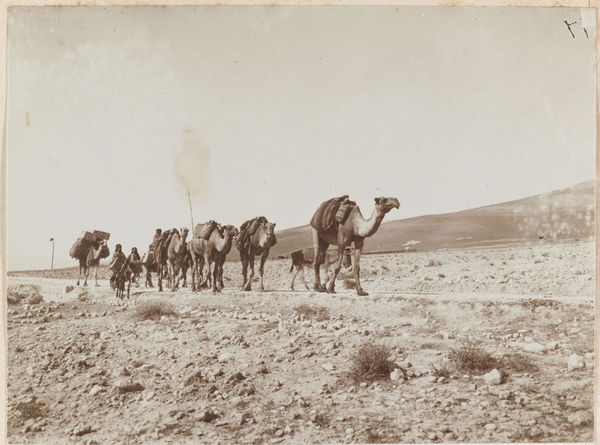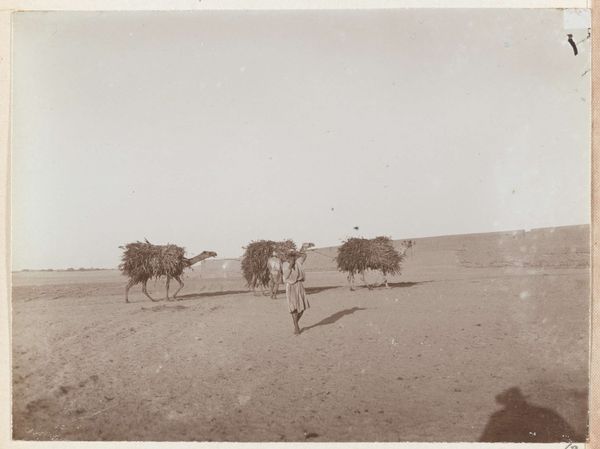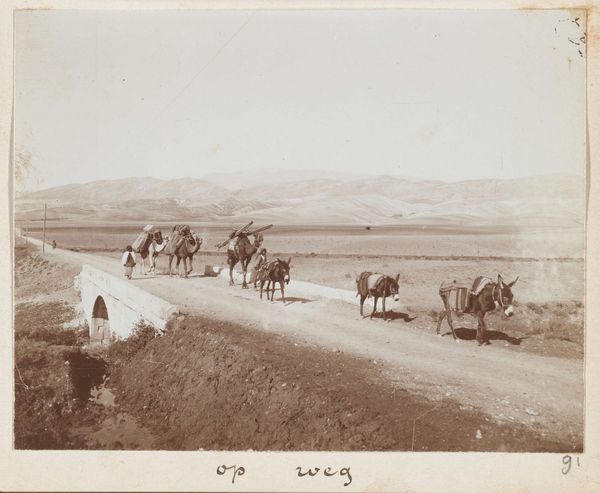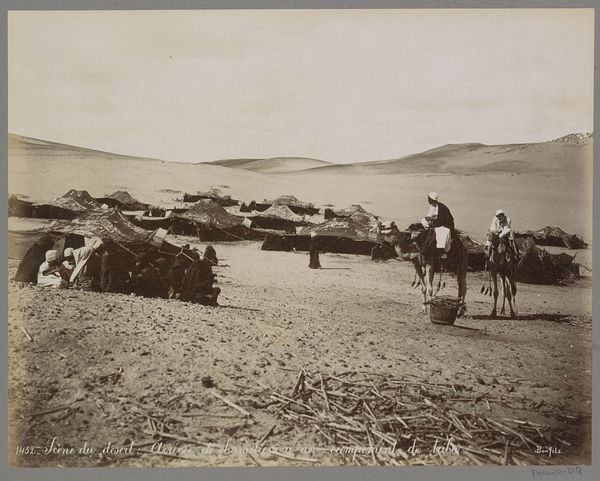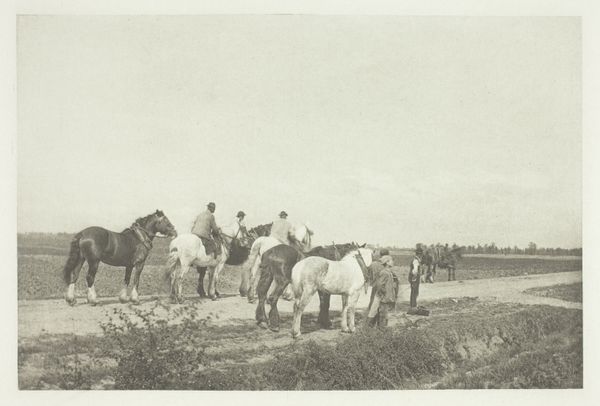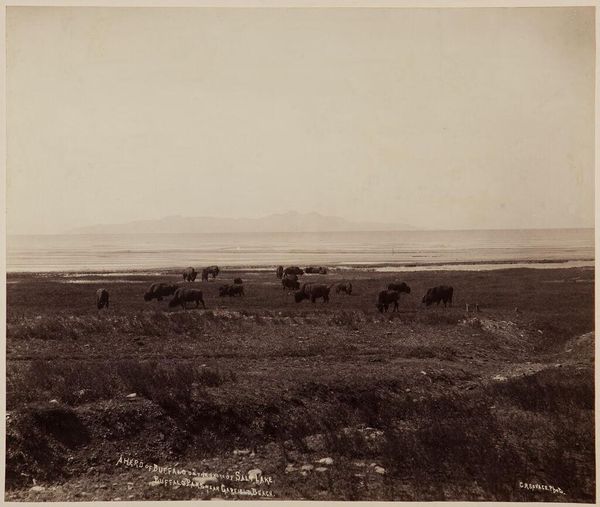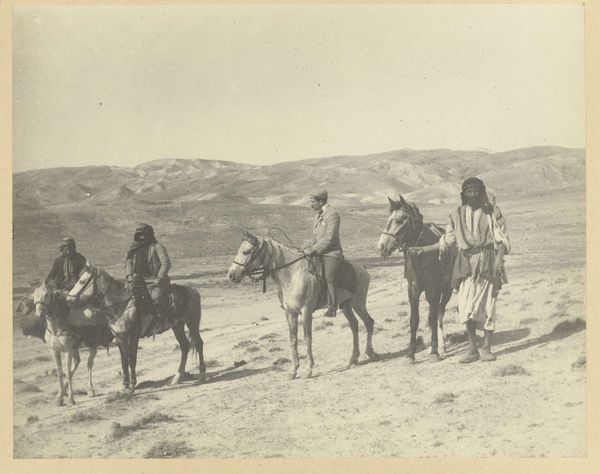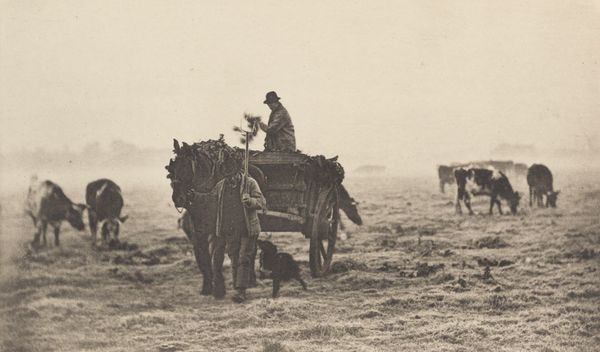
Karavanen in de Bekavallei onderweg naar Baalbek, Libanon en Palmyra, Syrië 1898
0:00
0:00
photography, gelatin-silver-print
#
landscape
#
outdoor photography
#
photography
#
orientalism
#
gelatin-silver-print
Dimensions: height 81 mm, width 107 mm
Copyright: Rijks Museum: Open Domain
Editor: This photograph, taken in 1898 by Johannes Lodewijk Heldring, is titled "Caravans in the Bekaa Valley on the way to Baalbek, Lebanon and Palmyra, Syria." It’s a gelatin silver print, and the sepia tone lends it a wistful, historical quality. What's your take on it? Curator: Well, immediately I'm struck by the Orientalist gaze inherent in this work. Heldring, a European photographer, is capturing a "romantic" vision of the East. We need to critically examine how such images, though seemingly documentary, participated in constructing and reinforcing colonial power structures. Who gets to represent whom, and for what purposes? Editor: That’s a great point. I hadn't considered the power dynamic. How does the composition itself play into that? Curator: The vast, open landscape dwarfing the caravan emphasizes the perceived exoticism and otherness of the scene. Heldring is not simply recording a journey; he's framing a narrative about the East for a Western audience. How might a photographer from the region have depicted the same subject matter? What stories would they choose to tell? What elements would they highlight or diminish? Editor: I see what you mean. By choosing this wide shot and desaturated tone, the individual stories and the nuances of the journey are almost erased, right? It’s presented as this monolithic, historical tableau. Curator: Precisely. We have to ask ourselves, what purpose did images like these serve back then, and what ideological baggage do they carry now? This forces us to look critically at the ways in which the Global South has historically been represented, and how we engage with these representations today. Editor: This has really changed how I see this image. I came in thinking of a picturesque landscape, but now I realize it's a lens through which we can examine colonialism and representation. Curator: Exactly! Art is never neutral. By unpacking these layers, we gain a much richer understanding of both the artwork and the society that produced it.
Comments
No comments
Be the first to comment and join the conversation on the ultimate creative platform.
